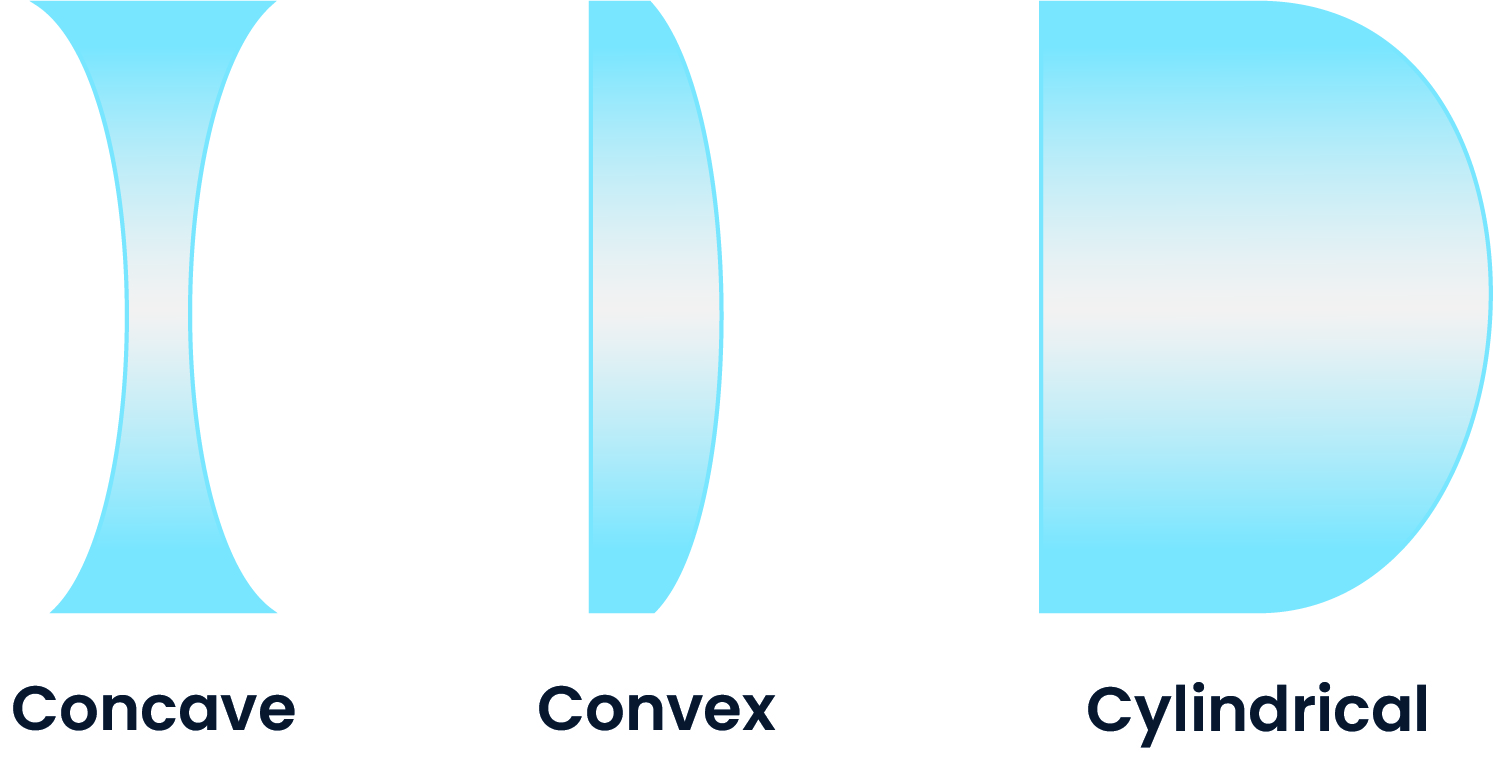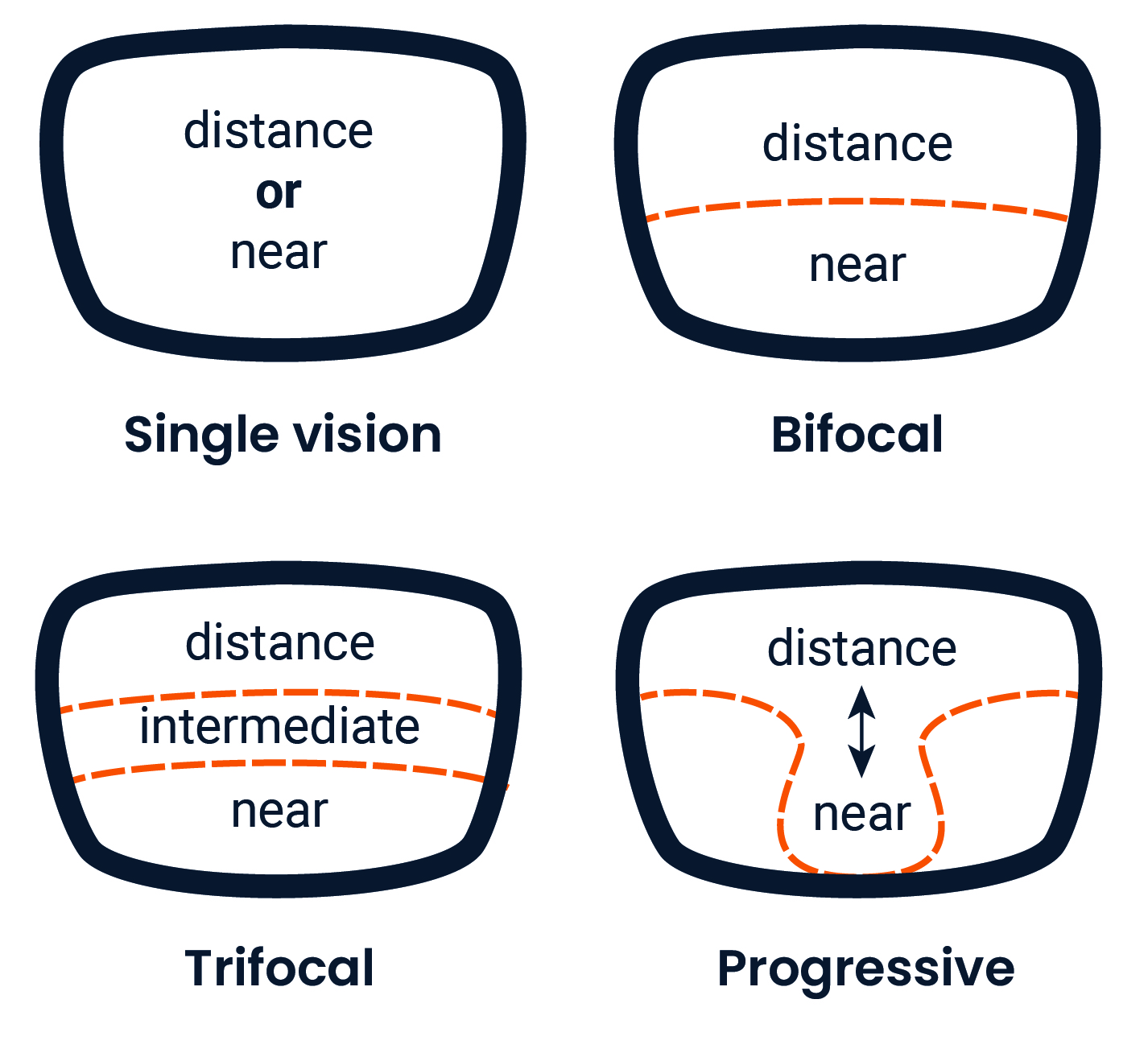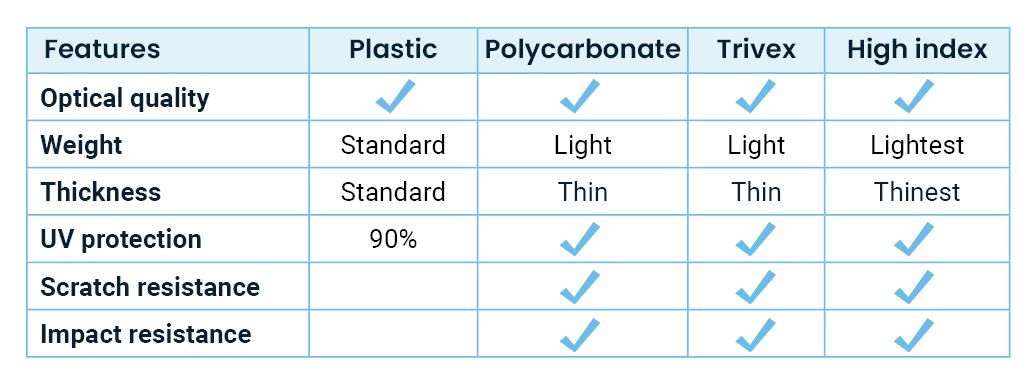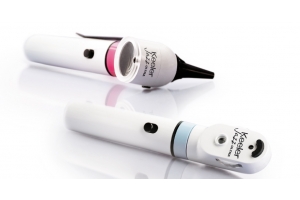
With so many different types of ophthalmic lenses on the market, it’s easier than ever for optometrists to correct vision problems. For those new to ophthalmology, such a sheer variety can be overwhelming.
Once the patient has been examined using tools like a phoropter, trial lenses, and eye charts, it is time to find the right type of lenses.
Ensuring lenses fit the diagnosis and lifestyle of the person wearing them is essential. And a patient’s perfect pair of lenses involves a clever combination of coating, curvature, composition, and focalisation.
Continue reading for a quick overview of the different types of ophthalmic lenses, curves, and coatings.
Find out about the most common optometry equipment in this simple guide
Types of ophthalmic lenses
When choosing the material for a lens, it’s important to know how, why, and where someone will be using it.
Optometrists used to craft lenses solely from fragile glass. A single drop could spell the end of an expensive investment – and clear sight.
Today, however, optometrists can choose from an array of different types of ophthalmic lenses. Let’s take a closer look at each option.
Plastic lenses
Out of all the materials listed below, plastic is the most economical. While plastic lenses offer superior optics and vision correction, they are also prone to scuffing and scratching. Plastic is best used for those with minor visual impairments.
Polycarbonate
These lenses are lighter, thinner, and much more durable than standard plastic materials. Lenses made from polycarbonate are best for stronger prescriptions because this material can help correct vision without adding thickness, which may cause the wearer's appearance to be distorted.
Most importantly, polycarbonate lenses are virtually indestructible — making them the ideal solution for active adults and children.
Trivex
Using Trivex results in ophthalmic lenses that are lighter, thinner, and ten-times harder than plastic. This material also offers ample protection against harmful UV rays. Due to their ability to withstand heavy impacts, Trivex is recommended for patients with active lifestyles.
High index
High index lenses revolutionised the eyeglass industry by giving those glasses wearers with strong prescriptions access to thinner and lighter lenses.
Comfortable, durable, and extremely thin – high-index lenses are a popular option. Due to the superior clarity of high index lenses, most optometrists recommend these to people with severe visual impairments; however, they are one of the more expensive lens options on the market.
The different curves of ophthalmic lenses

While lenses can form an endless array of shapes; optometrists typically choose one of the following three silhouettes.
- Concave lenses curve inward and doctors typically prescribe these lenses to treat nearsightedness.
- Convex lenses are needed if your patient has farsightedness. These lenses help bring immediate surroundings into focus by capitalising on the outward curve.
- Cylindrical lenses are ideal for individuals suffering from a deformation of the cornea – better known as astigmatism. A cylindrically shaped lens will help compensate for this condition.
Focal options for modern lenses
Before Benjamin Franklin invented the bifocal, people who suffered from both near and farsightedness had to use several glasses for their vision needs. Today, one pair of glasses can treat a variety of issues.
- Single focus lenses: A single focus lens option is ideal for people suffering from one eye condition.
- Bifocal lenses: These lenses hold two different prescriptions. While the top half is best-suited for correcting long-distance vision, the bottom will help you focus on your nearby surroundings.
- Trifocal lenses: Optometrists might prescribe a trifocal lens with three different focal points for someone suffering from various vision conditions.
- Progressive lenses: The newest of the four focalisation types, these lenses offer the benefits of multifocal lenses without the drawbacks of unattractive lines. Transitioning between the three viewing distances is seamless in progressive lenses.
Different types of coatings for ophthalmic lenses
Like a glaze in the optometrist’s toolkit, coatings take regular lenses and transform them to fulfil a variety of different purposes.
There are four common coatings for different types of ophthalmic lenses.
- Anti-Scratch: This durable coating makes it harder for scuff marks to appear on lenses.
- UV Protective: Ultraviolet rays are notorious for wreaking havoc on unprotected eyes. A UV protective coating serves as a sunblock for the eyes.
- Photochromic: These transitional lenses darken or lighten based on light saturation and are ideal for patients sensitive to sunshine.
- Anti-Reflective: This coating prevents glare, reflections, and diminishes halos around light.
Expert support at your Fingertips
For over 100 years, we’ve been at the forefront of the ophthalmic industry. In addition to expert advice, we offer high-quality equipment and residency opportunities for students in optometry training.










